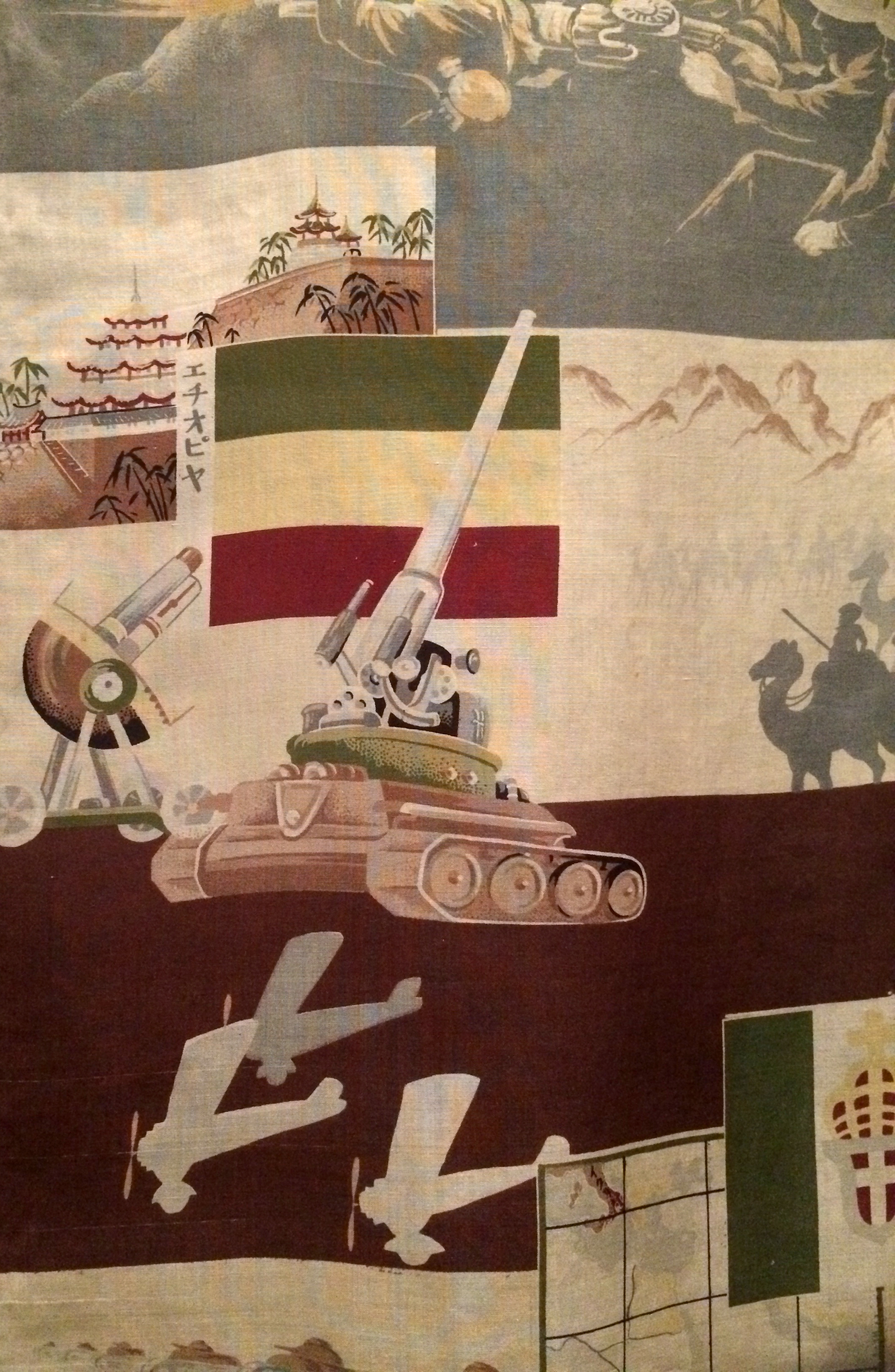Tanks and Kimonos
Man's Under-Kimono with "Italy in Ethiopia" Symbols
Japan Suite visited The Metropolitan Museum of Art exhibition in New York City entitled, Kimono: A Modern History this weekend. It’s focused on Kimonos from the 18th century to modern day Japan, and the designs on these garments reflected the social trends and history from that time period. We were fascinated to find foreign and modern objects on these traditional Japanese garments — things like a woven Mickey Mouse Kimono or undergarments printed with a camera, which reflects the modernizing of Japan. Another interesting and possibly strange discovery were some garments infused with propaganda. Some kimonos had fighter planes and tanks, while another glorifies Italy’s takeover of Ethiopia in 1935, and we also found an elegant black silk kasuri (a style of woven, dyed fabric) with the Hinomaru (the rising sun symbol most well-known from Japanese flags). It is fascinating to know that the Kimono was sometimes a walking statement, reflecting various periods of history. The show was truly eye-opening, even for Japanese people.
Woman's Kimono circa 1940s. Silk Kasuri with gold thread






